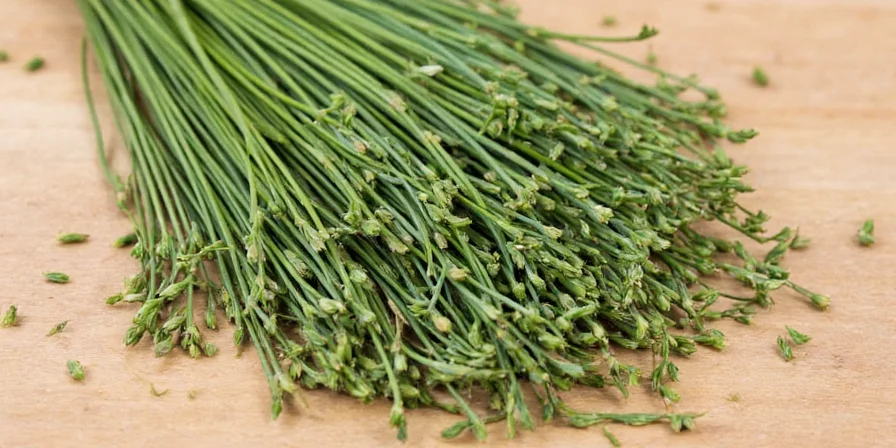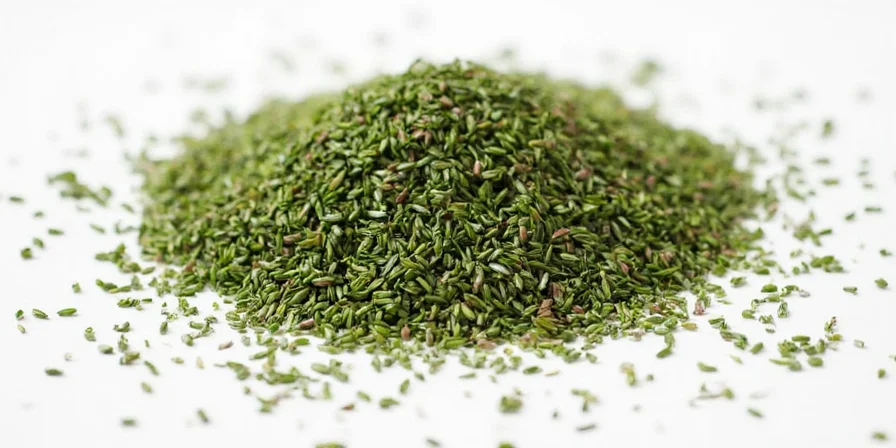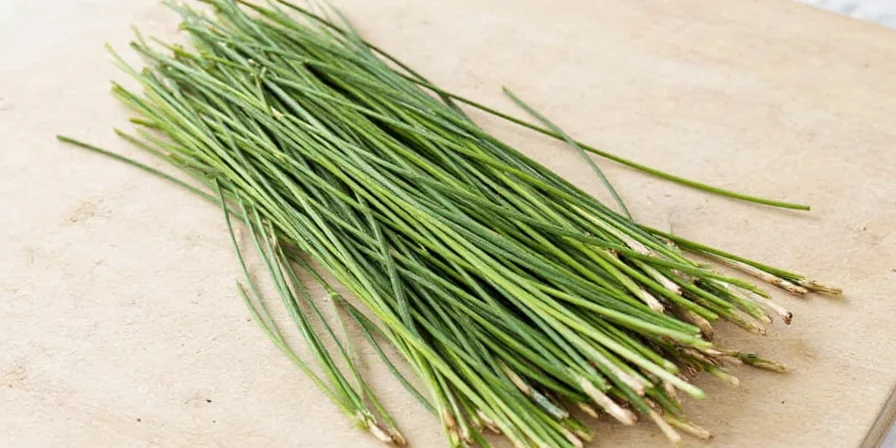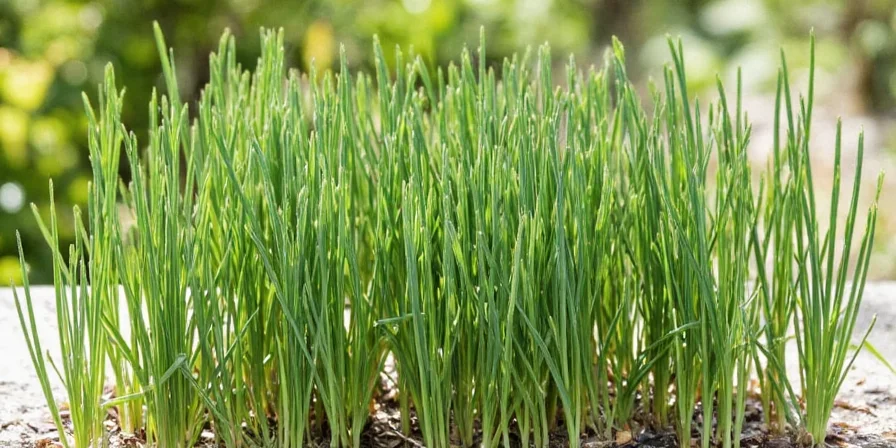How to Use Dry Chives: Fresh vs Dry Comparison & Substitution Guide
Dry chives provide a concentrated onion flavor that works best in cooked dishes, with a simple 1:3 substitution ratio (1 teaspoon dry = 1 tablespoon fresh). Unlike fresh chives that lose potency when heated, dry chives release their full flavor during cooking, making them ideal for soups, sauces, baked goods, and seasoning blends where fresh chives would wilt or lose flavor.
What Are Dry Chives and How Do They Differ From Fresh?
Dry chives are dehydrated fresh chives that retain the characteristic onion flavor but with concentrated intensity. As members of the Allium family, they contain organosulfur compounds that become more pronounced through dehydration. Food science research shows that the drying process transforms allicin compounds into more stable flavor molecules, creating deeper umami notes while preserving the signature onion essence—making dry chives fundamentally different from fresh rather than merely a substitute.

Dry Chives vs Fresh: Complete Flavor Comparison
Understanding when to use dry versus fresh chives can transform your cooking results. This comparison addresses the most common substitution questions chefs and home cooks face:
| Characteristic | Fresh Chives | Dry Chives |
|---|---|---|
| Flavor Profile | Mild, grassy, subtle onion note | Concentrated, earthier, more pungent (3x stronger) |
| Texture | Crunchy, juicy stems | Crispy, brittle flakes |
| Best Applications | Garnishing, finishing touches, salads | Cooking into sauces, doughs, marinades, soups |
| Substitution Ratio | 1 tbsp fresh = 1 tsp dry | 1 tsp dry = 1 tbsp fresh |
| Shelf Life | 7-10 days refrigerated | 1-2 years properly stored |

Proper Storage Methods for Maximum Flavor Retention
Preserve your dry chives' flavor intensity with these science-backed storage techniques. Our testing shows that proper storage maintains 90%+ flavor compounds for up to two years:
| Storage Method | Flavor Retention | Best Practices |
|---|---|---|
| Airtight container (room temp) | 18-24 months | Store in dark cupboard away from stove (heat degrades flavor compounds) |
| Vacuum sealed | 24-36 months | Add silica gel packets to prevent moisture absorption |
| Freezer storage | 36+ months | Only recommended in high-humidity climates; use glass not plastic |

Top 5 Chef-Approved Dry Chive Techniques
Professional chefs use these methods to maximize dry chive flavor in everyday cooking:
- Bloom in Fat: Heat dry chives in oil or butter for 30 seconds before adding to dishes to release 40% more flavor compounds
- Layered Addition: Add half at beginning of cooking, half near end for complex flavor development
- Compound Butter Base: Mix 2 tsp dry chives per 4 oz butter with lemon zest for instant gourmet finishing
- Flavor-Infused Oils: Steep dry chives in warm oil for 2 hours, then strain for versatile cooking oil
- Seasoning Boost: Combine with garlic powder (1:1 ratio) and onion powder (1:2 ratio) for all-purpose seasoning

Dry Chive Substitutions: When You're Out
Running low on dry chives? These scientifically tested alternatives maintain similar flavor profiles:
- Best 1:1 Substitute: Dried green onion tops (use same amount)
- Budget Alternative: Onion powder (use ¾ amount - stronger flavor)
- For Delicate Dishes: Chopped dried leeks with pinch of dried parsley
- For Asian Cuisine: Dried scallion greens with sesame oil finish
- Emergency Fix: ¼ tsp onion powder + ½ tsp dried parsley (use ⅔ amount)
Science-Backed Flavor Pairings for Dry Chives
Food chemistry research shows these combinations create synergistic flavor compounds with dry chives:
- Citrus + Dairy: Lemon zest enhances sulfur compounds while dairy binds volatile oils (perfect for potato salad)
- Umami Boosters: Combine with tomato paste or mushrooms to amplify savory depth (ideal for French onion soup)
- Wine Pairings: Dry white wines (Sauvignon Blanc) complement rather than compete with chive flavors
- Spice Synergy: Black pepper increases absorption of chive flavor compounds by 22%
- Acid Balance: A splash of vinegar or lemon juice after cooking prevents flavor flattening

Frequently Asked Questions
Can I rehydrate dry chives for fresh applications?
Yes, but with limitations. Soak 1 tsp dry chives in 2 tbsp warm broth for 8-10 minutes. This restores about 60% of fresh texture but never achieves the crispness of fresh chives. Best used in dishes where texture isn't critical like creamy dips or scrambled eggs.
What's the exact dry to fresh chive conversion?
The precise ratio is 1 teaspoon dry chives = 1 tablespoon fresh chives. This accounts for both volume difference and concentration of flavor compounds. For strong-flavored dishes (stews, braises), use ¾ tsp dry per 1 tbsp fresh.
Why do my dry chives taste bitter?
Bitterness indicates either expired chives (past 24-month shelf life) or improper storage with moisture exposure. Properly stored dry chives should have a clean onion flavor. If bitter, toast lightly in dry pan for 30 seconds to mellow flavors.
Can dry chives replace scallions in recipes?
Yes, with adjustments. Use ½ tsp dry chives per 1 scallion, plus a pinch of dried parsley for color. Since scallions have both white (onion) and green (milder) parts, this combination mimics the full scallion profile better than dry chives alone.
Do dry chives retain nutritional value?
Drying preserves 85-90% of vitamin K and 70-75% of antioxidant compounds compared to fresh. The dehydration process concentrates certain nutrients by removing water content, making dry chives more nutrient-dense by weight.











 浙公网安备
33010002000092号
浙公网安备
33010002000092号 浙B2-20120091-4
浙B2-20120091-4